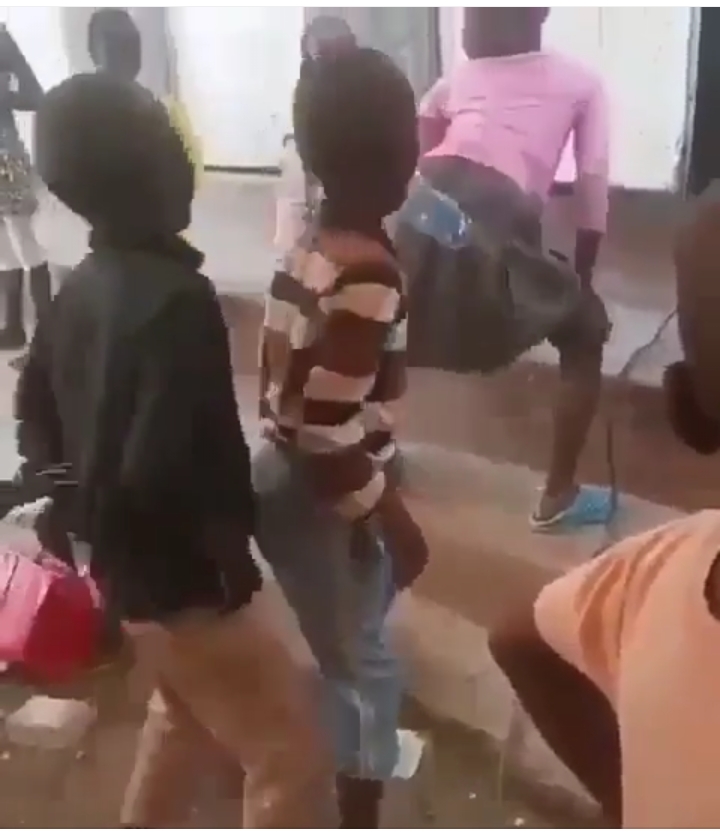Young twerking has emerged as a vibrant and expressive dance style that has captured the attention of both youth and adults alike. This tantalizing dance form, characterized by its rhythmic hip movements and energetic vibes, has found its way into various cultural spaces, from social media to music videos. It is not just a dance; it is a form of self-expression and empowerment among the younger generation.
The origins of young twerking can be traced back to the Southern hip-hop scene, where it gained traction in the early 2000s. However, its recent surge in popularity is heavily influenced by social media platforms like TikTok and Instagram, where viral dance challenges have taken the world by storm. Young twerking is more than just an art; it is a cultural phenomenon that reflects the creativity and dynamism of today's youth.
As we delve into the world of young twerking, we will explore its roots, the impact it has on the youth culture, and its implications for body positivity and self-confidence. This article will provide insights into how young twerking is reshaping the landscape of dance and entertainment, while also shedding light on some of the most prominent figures in this vibrant movement.
What is Young Twerking and Where Did It Begin?
Young twerking is a dance style that involves rhythmic hip-shaking and bouncing movements, often done to hip-hop or electronic music. While its roots can be traced back to African dance traditions, it gained mainstream popularity through hip-hop culture in the United States. The term "twerk" itself was popularized in the 90s but has evolved significantly over the years, particularly among younger dancers.
Who Are the Influential Figures in Young Twerking?
Several dancers and influencers have played a pivotal role in popularizing young twerking. They have inspired countless others to embrace this form of dance. Here are some notable figures:
- Miley Cyrus - Known for her provocative performances, she introduced twerking to a wider audience.
- Nicki Minaj - Her music videos often feature twerking, further embedding it in popular culture.
- Cardi B - An advocate for body positivity, she uses her platform to celebrate dance and self-expression.
- Young influencers on TikTok and Instagram who create viral dance challenges.
What Are the Benefits of Young Twerking?
Young twerking is more than just a fun activity; it comes with numerous benefits:
- Physical Fitness: Twerking is an excellent workout that improves flexibility, core strength, and overall fitness.
- Confidence Boost: Many young dancers report feeling more confident and empowered through dance.
- Social Connection: Participating in dance challenges fosters community and friendship among peers.
- Creative Expression: Young twerking allows individuals to express themselves creatively through movement.
How Does Young Twerking Promote Body Positivity?
In today's world, body image issues are prevalent among the youth. Young twerking promotes body positivity by celebrating all body types and encouraging self-acceptance. Through the dance, individuals learn to love and appreciate their bodies, regardless of societal standards. This acceptance is crucial in a culture that often promotes unrealistic ideals.
What Are the Criticisms Surrounding Young Twerking?
Despite its popularity, young twerking has faced criticism from various quarters. Some argue that it is overly sexualized and inappropriate for younger audiences. Additionally, concerns have been raised about the potential for exploitation and the influence of social media. However, advocates argue that young twerking is a form of expression and empowerment, allowing individuals to reclaim their bodies and movements.
How Can Parents Support Their Kids in Young Twerking?
For parents, understanding and supporting their children’s interest in young twerking can be vital. Here are some tips:
- Encourage Positive Expression: Allow your child to express themselves through dance without judgment.
- Open Dialogue: Discuss the dance and its cultural significance, promoting informed awareness.
- Engage in Dance Together: Join your child in classes or challenges to bond and understand their passion.
- Monitor Content: Keep an eye on the platforms they use to ensure a safe and positive experience.
What Does the Future Hold for Young Twerking?
The future of young twerking looks bright as it continues to evolve and adapt to new trends. With the rise of social media, young twerking is likely to gain even more traction, leading to the emergence of new dance styles and movements. As more young dancers embrace this form of expression, it will undoubtedly influence the broader dance culture, creating new opportunities for collaboration and creativity.
Can Young Twerking Be Considered an Art Form?
Yes, young twerking can definitely be considered an art form. Like any other dance style, it requires skill, creativity, and passion. Dancers often incorporate their unique styles and personalities into their movements, creating a dynamic and vibrant performance. As the dance continues to gain recognition, it may find its place in dance studios and performances, further solidifying its status as a legitimate art form.
Conclusion: Embracing the Power of Young Twerking
Young twerking is more than just a dance; it is a powerful form of self-expression that resonates with a generation. It promotes body positivity, confidence, and community, making it an essential part of youth culture today. By understanding its significance and supporting young dancers, we can help foster a world where creativity and self-acceptance thrive. As we embrace the power of young twerking, we celebrate the vibrant spirit of a generation unafraid to move to the beat of their own drum.
Nati Carolinas: The Rising Star Of The Entertainment World
Catherine Foster: A Journey Through Art And Advocacy
Discovering The Atlantic Plaza: A Hub Of Culture And Commerce


